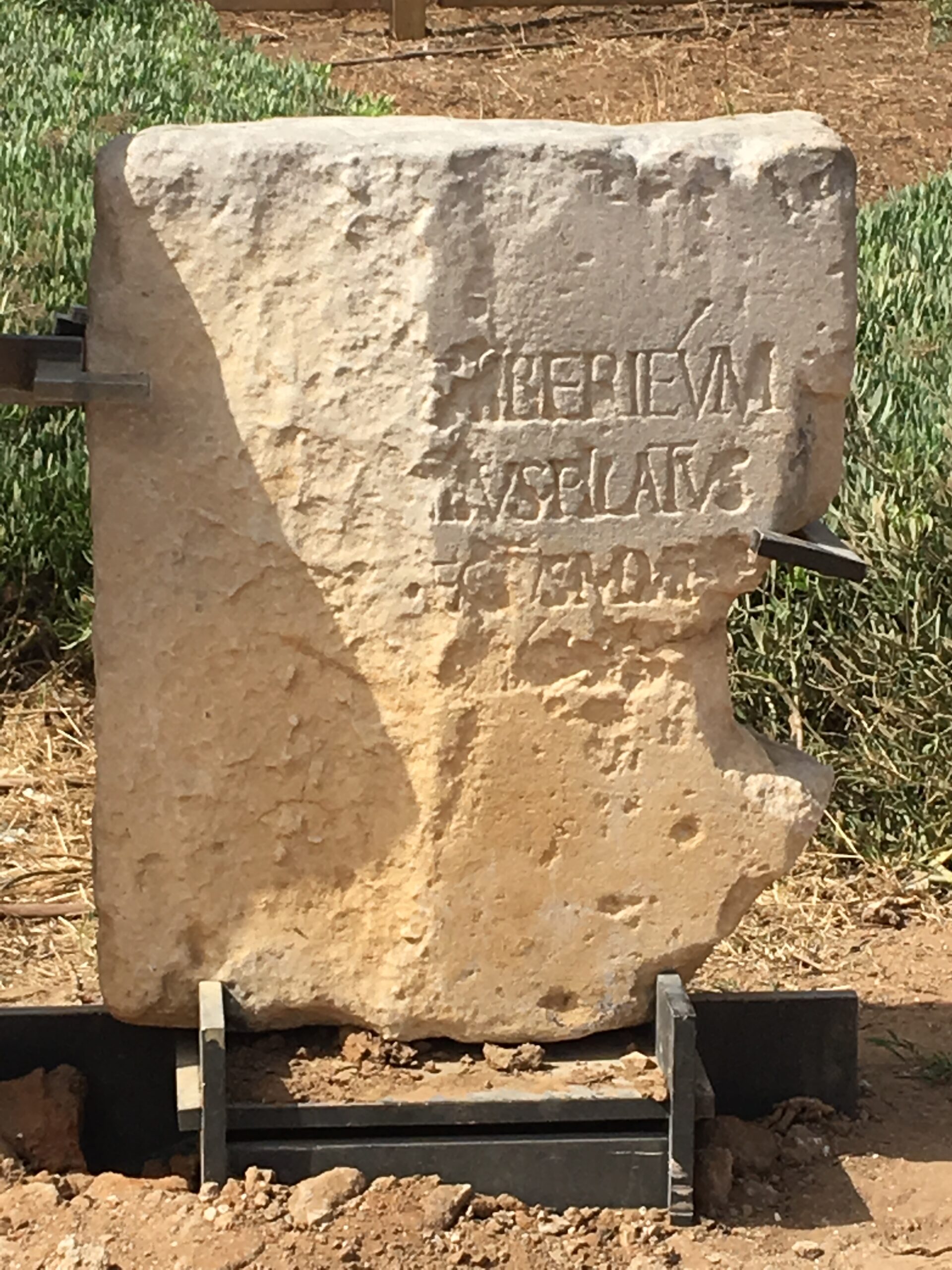By Michelle Johnson PhD., MDiv. | October 13, 2023
Pontius Pilate
Pontius Pilate is a name associated with the events leading to Jesus’ crucifixion. He is a Roman military leader who is mentioned some 50+ times in the Bible, depending on the translation. Most of these are found in the Gospels—Matthew 27, Mark 15, Luke 23, and John 18 and 19, sections that record Jesus’ crucifixion, death, and resurrection. All four Gospels testify that Jesus was brought before Pilate, who proceeded to ask Jesus if he was the king of the Jews. Ultimately, Pilate doesn’t seem to agree with those calling for Jesus’ crucifixion and hopes to avoid it by offering up one prisoner to be released, as per the custom. The people were given a choice: release Jesus or Barabbas—someone held for participation in rebellion. The crowd chose Barabbas and demanded Jesus’ death. Pilate complies and hands Jesus over to the Roman soldiers.
Pilate is mentioned in Luke 3:1 to provide historical context for the ministry of John the Baptist. Luke 13:1 also references Pilate and an incident of brutality by him that was reported to Jesus. The book of Acts makes three mentions of Pilate (chapters 3, 4, and 13), all of which are in the context of his role in Jesus’ crucifixion. Lastly, 1 Timothy 6 also notes Pilate as the one before whom Jesus testified. Pilate is essentially a minimally mentioned person within the whole of Scripture. So, what is the point in talking about him here? While working on a larger project dedicated to the historical reliability of Scripture, I was reminded of Pilate, a stone I saw while traveling in Israel, and the role archaeology can play in affirming what Scripture says.
A Stone
It was a hot day in June 2019. The group I was traveling with in Israel stopped at Caesarea Maritima. Located on the eastern coast of the Mediterranean Sea, the area is an excellent site to explore an excavated Roman aqueduct, hippodrome, port, and amphitheater. The salty spray could be felt as we walked along the edge of the water, trying to imagine the activity when Rome dominated the area. While significant for many reasons, Caesarea Maritima caught my attention for one particular reason. In 1961, Antonio Frova and his excavation team found a stone that helped locate Pontius Pilate as a historical person. What they discovered was a 2-foot by 3-foot limestone slab that identified “Pontius Pilate” as the “Prefect of Judea.” Also mentioned on the stone was “Tiberieum.”[1] It is believed the stone marked the dedication of a temple to the current Roman emperor by Pilate.[2] As we strolled along the grounds of Caesarea Maritima, we paused in front of a replica of this slab—the actual one is safely inside at a museum, out of the elements. It is the perfect place to recall the passages referenced above.
The Bible
So why does this matter? According to Randall Price and H. Wayne House, Pilate’s existence hasn’t really been the subject of debate.[3] However, I would suggest it provides some power affirmations to the truth of what Scripture has to say. First, given the significance of the events in which we meet Pilate in the Bible—Jesus’ death, burial, and resurrection, the archaeological support for the historical Pilate lends credence to the testimony of the Gospel writers’ testimony about the most significant event for Christianity.
Second, Price and House show the stone points to the accuracy of Scripture in the recording of Pilate’s title. The stone (written in Latin) refers to Pilate as a “Prefect.” The Gospels, written in Greek, assign the title hegemon or “governor” to Pilate. These terms are equal. Later writings designate Pilate as the “Procurator.” According to Price and House, the title “Prefect” was the title used at the time Pilate held this position—A.D. 26/27-37. It wasn’t until later that this role was referred to as a “Procurator.”[4] This detail points to the accuracy with which Scripture has recorded the events. Price and House argue that this detail supports an early date for the composition of the Gospels.[5] The early dating of the Gospels gets us into a discussion that goes beyond this article but is important to the discussion of the reliability of the Bible.
Thirdly, the mention of Pilate in Luke 3:1 assists in locating John the Baptist’s ministry in history. The stone found at Caesarea Maritima aids in confirming this as well. The account of John the Baptist is of no small significance in the recording of Jesus’ baptism and beginning ministry. It is exciting to see how archaeology can “confirm the historical reality and accuracy of the Bible and to demonstrate that (the Christian) faith has a factual foundation.”[6]
About the Author

Michelle Johnson earned a Ph.D. in Theology and Apologetics at Liberty University. She also earned her M.A. in Theological Studies and her M.Div. in Professional Ministries at Liberty University. Michelle graduated from the University of Minnesota with her undergraduate degrees. She and her husband Steve live in Mankato, Minnesota, where she also serves in women’s ministries. In addition to her love of theology and apologetics, Michelle also has a passion for historical studies, particularly the theology of the Patristics. When she is not spending time reading or writing, Michelle can often be found dreaming of her next travel adventure or enjoying a great cup of coffee. Michelle Johnson serves as the Executive Vice-President and Managing Editor of Bellator Christi Ministries.
Notes
[1] Randall Price and H. Wayne House, Zondervan Handbook of Biblical Archaeology (Grand Rapids, MI: Zondervan, 2017), 275.
[2] Randall Price, The Stones Cry Out (Eugene, OR: Harvest House Publishers, 1997), 307.
[3] Price and House, Zondervan Handbook of Biblical Archaeology, 275.
[6] Ibid., 15.
Copyright, 2023. Bellator Christi.





